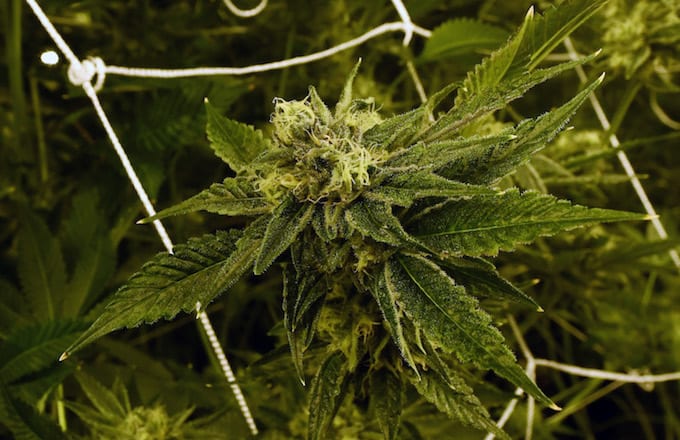
While
there are plenty of veteran potheads out there, not all of us have been
rolling up joints since middle school. Even those of us who have been
steadily indulging for a while might not actually know anything about weed,
whether it's because we were too scared to Google it on our family
computer or because we always had a friend who was a plug (and for that,
we thank them).
As the culture surrounding marijuana use continues to change—Michigan, Missouri, and Utah just passed amendments that ease up on marijuana restrictions—more and more people are toking up.
And while we're all for it, it's important to get at least a little educated on it, just like you would with your diet or a new vitamin.
The amount of information and the lingo can be overwhelming: you might know that words like THC, cannabis, CBD, indica, and sativa are weed-adjacent, but they may not actually mean anything to you. And beyond that, you want to know what to look for; marijuana is a plant, after all, and there are certain characteristics to be cautious of or on the hunt for to ensure that you're getting your money's worth (weed ain't cheap, y'all). Thankfully, we've provided a guide here that not only breaks down the three main "types" of weed, but also some other basics like stem texture and scent. And yes, we even revealed what THC actually stands for—you're welcome. This is your guide to weed, with all of the important stuff you should be looking for.
As the culture surrounding marijuana use continues to change—Michigan, Missouri, and Utah just passed amendments that ease up on marijuana restrictions—more and more people are toking up.
And while we're all for it, it's important to get at least a little educated on it, just like you would with your diet or a new vitamin.
The amount of information and the lingo can be overwhelming: you might know that words like THC, cannabis, CBD, indica, and sativa are weed-adjacent, but they may not actually mean anything to you. And beyond that, you want to know what to look for; marijuana is a plant, after all, and there are certain characteristics to be cautious of or on the hunt for to ensure that you're getting your money's worth (weed ain't cheap, y'all). Thankfully, we've provided a guide here that not only breaks down the three main "types" of weed, but also some other basics like stem texture and scent. And yes, we even revealed what THC actually stands for—you're welcome. This is your guide to weed, with all of the important stuff you should be looking for.
Sativas
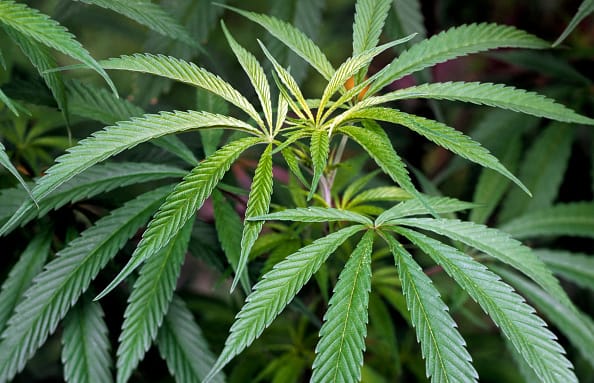
Sativas
are known for motivating and getting you moving around versus vegging
out on the couch. The leaves of a sativa are thin and spread apart. They
have a higher levels of THC and lower levels of CBD (the chemical
that's believed to aid pain relief and anxiety). Creativity flourishes
when smoking a sativa and treating depression is a major reason for its
use among medical patients. Sativa strains are likely to get you
talking, thinking, and philosophizing. To remember that sativas are
typically elevating in their effects keep this phrase in mind, “Sunny
Sativa."
Indicas
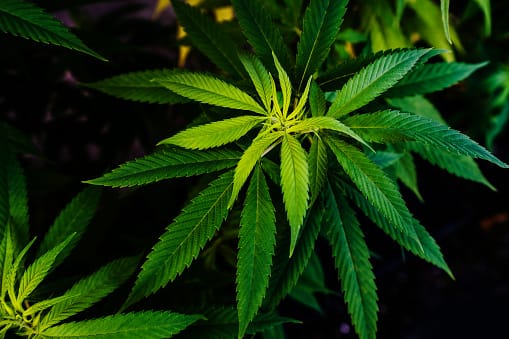
Indicas
have a higher CBD content and are noted for their calming effects. The
leaves are also wider and much closer together than a sativa plant. When
you are buying an indica bud you want it to be dense—that’s how you
will know just how much of an indica it really is. The more compact the
bud, the more indica properties it has. Indicas are helpful with pain
relief, insomnia, and eliminating anxiety. It has been known to produce a
heavy and relaxing body high. This can be great for muscle tension in
athletes or as a way to unwind after a long workday.
Trouble remembering whether an indica is uplifting or couch-locking? Think of it this way: Indica = In Da Couch.
Trouble remembering whether an indica is uplifting or couch-locking? Think of it this way: Indica = In Da Couch.
Hybrids
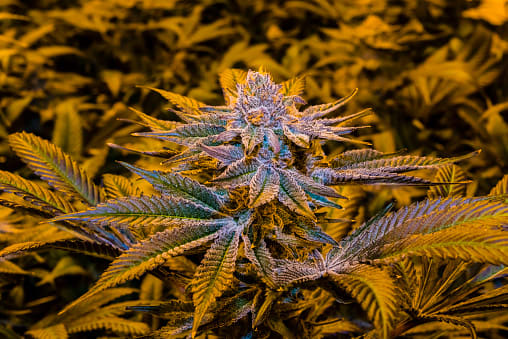
Hybrids
are the cherry on top of the cannabis sundae. They can be the perfect
combination of energizing and relaxing, depending on the ratio of sativa
to indica. Hybrids are created with the intention of maintaining the
best qualities from both the sativa and indica parent plant, which often
results in super-potent (and super popular) strains.
Tetrahydrocannabinol
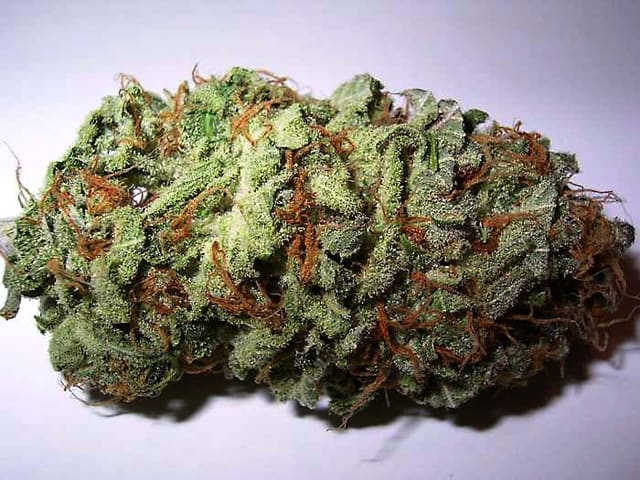
THC
for short, this is the naturally occurring chemical in marijuana which
gives you the feeling of being high. THC talks to your brain and signals
it to release dopamine (the hormone and neurotransmitter that works
with the pleasure and reward hubs.) It’s thought to have been meant as a
defense mechanism for the cannabis plant, intended to ward off
herbivores and keep the flowers safe. (That sure backfired.)
Trichomes
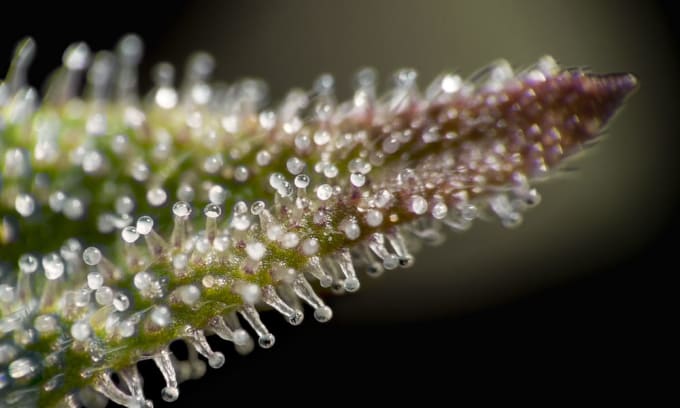
Those
sugary looking crystals all over your weed—those are trichomes. That’s
where the THC is hanging out, in the trichomes, all over the stems and
leaves. Up close they look like tiny mushrooms and can be a few
different colors. The best scenario is for them to be milky or amber in
color when you consume them. Milky trichomes will give you more of a
cerebral high and amber colored ones will be more relaxing. If they are
clear they aren’t going to be anywhere near as potent.
Properly Dried
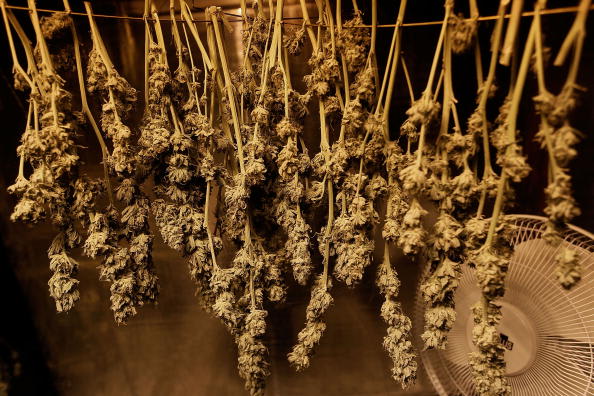
If
you bend a stem and it snaps, you’re good to go. Otherwise the
marijuana is too wet and you really shouldn’t smoke it yet. If you are
offered pot that is wet and has been in a sealed bag there might even be
mold on it. Conversely, herb that crumbles when you break it up, like
powder, is far too dry and will be severe on your throat. Try putting a
few leaves of lettuce with your dry nugs as it’s a safe way to add
moisture back into them. Be your own advocate and snap a bud before you
buy.
Properly Cured

If
taking a whiff of your cannabis reminds you of a freshly cut lawn, then
your weed has not been cured properly. The curing process happens after
initial drying and can take weeks. During this time chlorophyll breaks
down and the plant turns non-active THC into a potent and very active
compound. Because it takes a little extra time, some growers rush the
process so be warned: rushing the curing process greatly compromises the
power of your pot.
Top Shelf vs. Regs

By
now we should all be smoking on some good Mary Jane and leaving the
brick packed schwag for the birds. You won’t be getting a dime bag of
top shelf marijuana any time soon, but you do get what you pay for,
don’t you? Top shelf cannabis is going to be truckloads higher in THC,
taste better, and produce a very different high than if you’re smoking
some reggie. When selecting herb, treat yourself. Let the jokers keep
their nickel sacks.
Moldy Marijuana
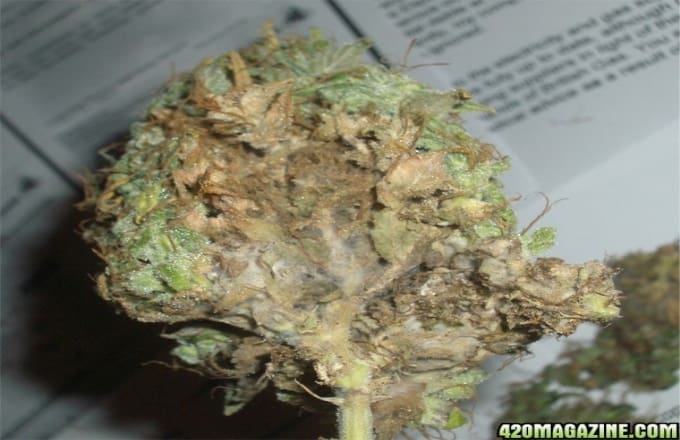
Take
a few seconds before you roll up that joint and make sure your green is
looking right. This is more prevalent on the black market, no doubt,
but mold on marijuana can be spotted on buds bought from dispensaries
also. Mold is gross, it’s not going to get you high, and it’s certainly
not what you’re paying for. Even worse—it’s dangerous. You can get a
lung infection from smoking mold. Scan your nugs cautiously before light
that blunt.
Sparks

If
nutrients haven’t been properly flushed from the plant during
cultivation, chances are high that burning it will cause sparks to fly,
and not in a good way. Sure it seems like a novel effect—it's July 4th
and 4/20 all mixed into one. Yippee!—but a badly flushed product will
taste bad, smell off, and it's not a good buy. Unfortunately, there is
not much of a way to identify this issue until you’re smoking it.
Magnifier
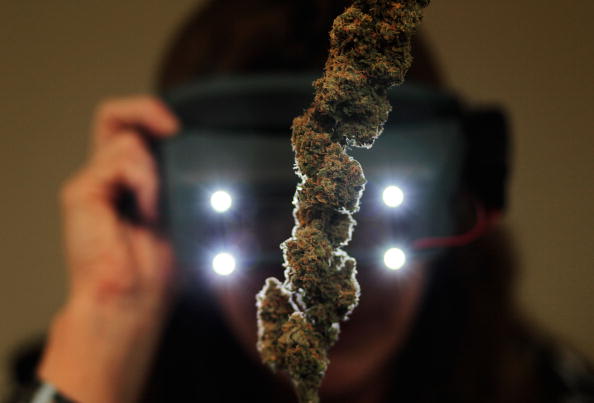
Want
to make sure you’re getting the best marijuana and don’t mind maybe
looking a little pretentious while doing it? Get yourself a magnifier.
From 60x – 100x you can easily see the color of the trichomes you’re
getting, and do a quick check to make sure there is no hidden mold
lurking around your potential buds. It’s worth it if you have a few
options to choose from. There are several magnifying lenses on the
market for under $25. If you shop at a dispensary in Denver, you are
likely to see a large magnifier over the counter. If so, use it!

No comments:
Post a Comment